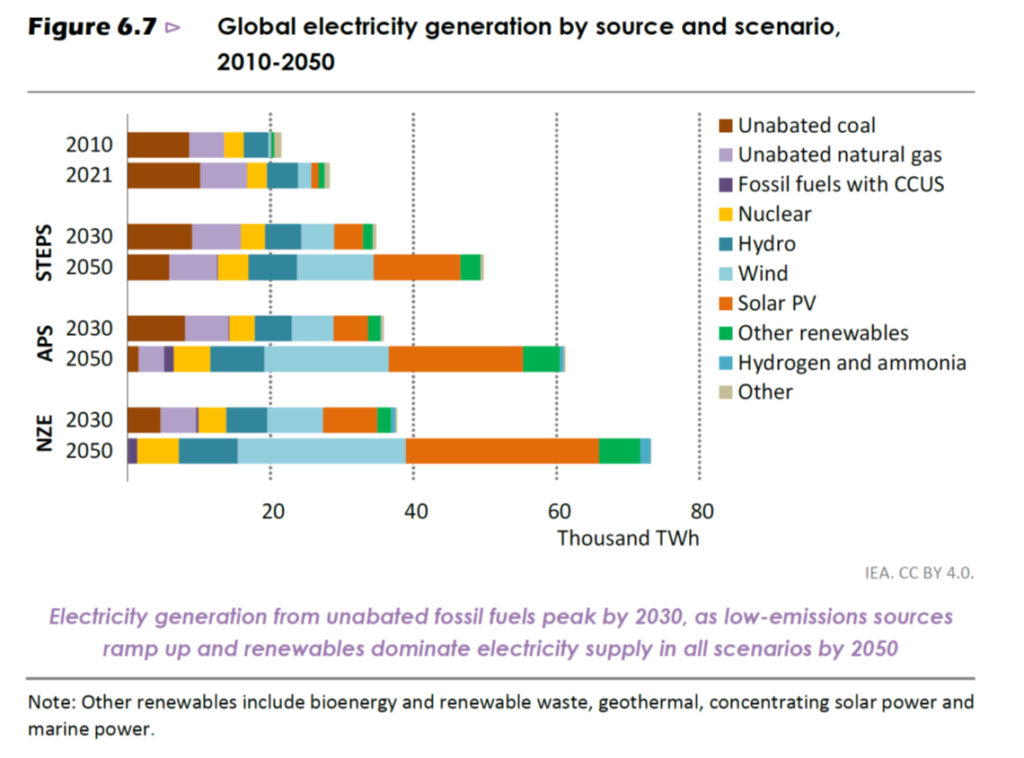
The Energy Collective Group
This group brings together the best thinkers on energy and climate. Join us for smart, insightful posts and conversations about where the energy industry is and where it is going.
Post
Achieving net zero requires building all low carbon technologies including lots of nuclear
In its 2022 report on the role of nuclear power in fighting climate change, “Nuclear Power and Secure Energy Transitions”, the International Energy Agency (IEA) says “Nuclear energy can help make the energy sector’s journey away from unabated fossil fuels faster and more secure.”
It goes on to clearly lay out why nuclear power is so important to a clean energy future noting that achieving net zero globally will be harder and more expensive with less nuclear.

The report also notes there are challenges to further nuclear deployment emphasizing the importance of continuing to reduce costs and ensure projects are built to cost and schedule. These are indeed justifiable issues and there is no doubt the industry must perform for long term success.
While the IEA may say nuclear is important for net zero, this has not resulted in projections for a large new nuclear program. Rather, as is shown in the 2022 World Energy Outlook (WEO 2022) just released from the IEA, the role for nuclear remains modest. Yes, there is a doubling of nuclear capacity to 2050, but because of continued electricity demand growth the nuclear share falls from 10% of global electricity supply to only 8% in its Net Zero Scenario.
On the other hand, renewables are projected to account for the majority of capacity additions over the outlook period (to 2050). In the base STEPS scenario, wind and solar PV together set new deployment records every year to 2030 and then continue with increased annual growth through to 2050. For the IEA Net Zero scenario, wind grows by a factor of 12 and solar even faster with 27 times more solar in 2050 than in 2021. The assumption when it comes to renewables growth is that there are no limits. No concern about land use, or volume of critical materials required, or how storage technology will develop to support increasing the share of renewables from its current 28% of electricity supply to 88% of a larger global electricity system. Yet we know from experience in Germany, California and others where variable renewables have successfully achieved a relatively high share of electricity supply, that system reliability suffers, often requiring fossil fuel back up to support their intermittency.

Source: IEA World Energy Outlook 2022
To be fair, we don’t blame the IEA for their views. Based on recent experience in western countries with little ongoing nuclear new build and projects that have gone over budget and schedule, it may be difficult to see a path for more rapid nuclear growth. But that certainly doesn’t mean there shouldn’t be a challenging goal. Just look at China that has built over 50 GW of nuclear capacity in the last 20 years and has approved 10 new large reactors this year alone. In the west we have examples as the US built about 100 units and France built a fleet of 59 units in less than 30 years. Twenty years ago, there was little confidence in the ability of renewables to scale and here we are today, now assuming almost unlimited growth given their success. Just as with renewables, increasing the scale and pace of nuclear new build as we have achieved in the past is also possible given the political will.
There is an international study that considers a more balanced growth for all the clean technologies. UNECE (United Nation Economic Commission for Europe) has recently released its report “Carbon Neutrality in the UNECE Region Technology Interplay under the Carbon Neutrality Concept” which takes a fresh look at how to use a broad range of technology, both existing and new to meet its net zero challenge.
This report finds “there are achievable pathways for governments to design and implement a carbon-neutral energy system through technology interplay.” In its carbon neutrality innovation scenario, UNECE considers the potential of three innovative low- and zero-carbon technologies: a new generation of nuclear power, CCUS, and hydrogen – to deliver on carbon neutrality. In this scenario nuclear grows to 3.4 times its current base in the region by 2050 (as opposed to 2x by IEA*) and reaches 27% of energy supply (compared to 8% by IEA*). It also notes challenges with all technologies. For example, it predicts 4,430 TWh of solar power in the region by 2050 (compared to the 27,000 TWh globally in the IEA net zero scenario) and notes this requires 7 million utility scale panels covering an area equal to 2.8 million football pitches equal to the entire surface area of Belgium.
There is little doubt the challenge of achieving net zero emissions in our energy systems by 2050 is enormous. Given the view to electrify everything, electricity use will at least double. To meet this growth, it has been generally accepted that nuclear power has a critical role to play, but the size of that role remains in question. Concerns about the industry’s ability to deliver has limited its potential in many studies such as the IEA WEO 2022. However, UNECE has taken a different approach and explored a more rapid expansion of all low carbon technologies, rather than assuming wind and solar can do all the heavy lifting. This seems a more viable model. Get all technologies growing as fast as possible to ensure the primary goal of carbon neutrality is achieved. We only have one world, and we need to build all low carbon technologies as quickly as we can if we really want to reach our climate goals.
* It should be noted the UNECE projects are limited to the UNECE region and the IEA projections are global.
Discussions
No discussions yet. Start a discussion below.
Get Published - Build a Following
The Energy Central Power Industry Network® is based on one core idea - power industry professionals helping each other and advancing the industry by sharing and learning from each other.
If you have an experience or insight to share or have learned something from a conference or seminar, your peers and colleagues on Energy Central want to hear about it. It's also easy to share a link to an article you've liked or an industry resource that you think would be helpful.
























Sign in to Participate